Heritage farming has emerged as a cornerstone of sustainable agriculture, offering timeless wisdom and practices that honor the agricultural heritage of generations past. For those seeking expert guidance, obtaining heritage farming advice can be a transformative step toward preserving traditional techniques and ensuring the continued productivity of our lands. This comprehensive guide delves into the intricate details of agricultural heritage, exploring how these practices not only sustain the environment but also protect cultural traditions. By examining the best methods for adapting legacy farming techniques to modern contexts, we uncover the vital role heritage farming plays in fostering resilience and continuity. Whether you’re a seasoned farmer or new to the craft, this exploration of heritage farming practices provides valuable insights and practical advice to help you thrive. Join us as we embark on a journey to understand the essence of heritage farming, its significance in today’s world, and how you can embrace these time-tested strategies to cultivate a thriving farm.
Key Takeaways
– Select Heirloom Seeds: Choose seeds suited to your climate and soil for genetic integrity and adaptability.
– Assess Land Health: Conduct soil tests and consider local climate conditions for sustainable farming practices.
– Manage Water Efficiently: Implement irrigation and drainage systems to optimize water usage and prevent issues.
– Promote Biodiversity: Diversify crops and integrate livestock or native species to enhance ecosystem balance.
– Understand Market Demand: Research local markets and build connections for viable product sales.
– Plan Finances Carefully: Develop a budget and explore funding options for long-term farm viability.
– Educate and Network: Join farming communities and seek resources for expert guidance and support.
– Utilize Tools Wisely: Invest in essential tools and resources like Old Seed’s guides for effective heritage farming.
– Adopt Sustainable Practices: Use organic methods and integrated pest management for eco-friendly agriculture.
– Incorporate Agroforestry: Plant trees alongside crops to improve soil fertility and biodiversity.
– Build a Community Network: Connect with local organizations and farmers for mentorship and resources.
– Stay Informed Continuously: Access educational programs and stay updated on trends in sustainable agriculture.
Expert Tips for Successfully Implementing Heritage Farming Practices
Heritage farming offers a unique approach to sustainable agriculture, preserving traditional methods while enhancing biodiversity and environmental health. To effectively implement heritage farming practices, consider the following expert tips:
- Start with Research and Planning: Begin by studying local soil conditions, climate, and available resources. oldseed.org provides comprehensive guides on heirloom gardening tailored to various regions and crop types.
- Choose Heirloom and Open-Pollinated Seeds: Select seeds that are open-pollinated or heirloom to ensure genetic diversity and resilience. oldseed.org offers a variety of rare and heritage seed varieties.
- Implement Crop Rotation and Mixed Farming: Rotate crops to maintain soil fertility and reduce pests. oldseed.org highlights the benefits of mixed farming systems that integrate vegetables, fruits, and animals to create balanced ecosystems.
- Practice Organic and Biodynamic Methods: Avoid synthetic chemicals and instead use organic compost and biodynamic preparations. oldseed.org shares techniques for creating biodynamic gardens that enhance soil health and plant vitality.
- Build Soil Health and Biodiversity: Incorporate cover crops, compost, and diverse planting arrangements to support pollinators and beneficial insects. oldseed.org provides detailed advice on soil amendments and biodiversity enhancement.
- Preserve Traditional Varieties: Support heirloom and native plant species to protect genetic diversity. oldseed.org offers resources for preserving and growing these vital plant types.
- Engage with Local Communities and Networks: Join heritage farming groups and networks to share knowledge and resources. oldseed.org connects members with local farmers, experts, and like-minded individuals.
By following these tips, you can successfully implement heritage farming practices that benefit both your land and the broader environment. Explore oldseed.org for further insights and tools to get started with sustainable farming today!
Top Expert Tips for Successfully Implementing Heritage Farming Practices
Implementing heritage farming practices requires a combination of knowledge, preparation, and sustainable practices. Here are some expert tips to help you get started:
- Start with Research and Planning: Begin by learning about the specific crops and plants suited for your region and climate. Resources like Old Seed’s Heritage Farming Guide can provide valuable insights into heirloom varieties and local growing conditions.
- Build Soil Health: Healthy soil is the foundation of successful farming. Incorporate organic matter, compost, and natural fertilizers to enrich your soil. This ensures better nutrient availability and water retention, which are crucial for heritage crops.
- Choose the Right Varieties: Selecting the correct heirloom or open-pollinated seeds is essential. Look for seeds that are adapted to your area’s climate and soil type. Websites like Old Seed offer a variety of heritage seeds tailored for different regions.
- Practice Crop Rotation: Rotating crops helps maintain soil fertility and prevents diseases. Heritage farming often involves mixing different crops, which can also attract pollinators and improve biodiversity.
- Water Efficiently: Heritage farming may require less water due to the resilience of heirloom plants. However, consistent watering during critical growth phases is necessary. Use drip irrigation or rainwater collection systems to optimize water usage.
- Preserve Biodiversity: Heritage farming plays a vital role in preserving genetic diversity. By growing a variety of plants, you contribute to biodiversity and adaptability in the face of changing environmental conditions.
- Engage in Community and Networking: Collaborating with fellow farmers and experts can provide valuable support and knowledge. Join online forums, local farming groups, or attend workshops organized by organizations like Old Seed Events to learn from experienced practitioners.
By following these tips, you can effectively implement heritage farming practices and enjoy the benefits of sustainable, resilient agriculture. Explore more resources and guides on Old Seed to further your journey in heritage farming.
What Are the Best Ways to Get Started with Heritage Farming?
Heritage farming offers a unique opportunity to connect with nature, preserve biodiversity, and enjoy fresh, nutrient-rich produce. Here’s a step-by-step guide to help you get started:
- Research and Assess Your Land
- Choose the Right Crops
- Plan for Sustainability
- Preserve Heirloom Seeds
- Build a Community
- Stay Informed
Before planting, evaluate your property. Consider factors like soil type, sun exposure, water availability, and climate conditions. Old Seed’s soil testing guide can help you understand your land better.
Pick heirloom varieties suited to your region. These plants are adapted to local conditions and offer unique flavors. Explore options like tomatoes, squash, and peppers. Learn more about crop rotation to maximize productivity.
Implement organic practices to reduce chemical use. Rotate crops to maintain soil health and prevent pests. Discover sustainable farming techniques tailored to your needs.
Saving seeds is a cornerstone of heritage farming. Follow this guide to learn effective seed preservation methods and stay compliant with local regulations.
Join local gardening clubs or farm groups to share knowledge and resources. Find nearby communities dedicated to heritage farming.
Subscribe to newsletters, follow blogs, and attend workshops focused on heirloom gardening. Explore Old Seed’s latest posts for tips and updates.
Key Considerations for Beginning Heritage Farming
Heritage farming offers a unique opportunity to connect with nature and preserve traditional agricultural practices. However, it requires careful planning and thoughtful execution. Below are the key considerations for starting a heritage farming practice:
- Seed Selection
- Select heirloom or open-pollinated seeds from reputable sources to ensure genetic integrity.
- Research the specific variety suited for your climate and soil conditions.
- Consider the purpose of your farm—whether it’s for food production, conservation, or educational purposes.
- Land Preparation
- Assess the fertility and pH levels of your soil to determine necessary amendments.
- Minimize tillage to protect soil structure and organic matter.
- Plan crop rotation cycles to maintain soil health and prevent pests.
- Water Management
- Install efficient irrigation systems or rainwater harvesting structures.
- Implement drainage systems to prevent waterlogging and root rot.
- Monitor soil moisture levels to optimize water usage.
- Biodiversity
- Diversify crops to create a balanced ecosystem that supports pollinators and beneficial insects.
- Integrate livestock or companion plants to enhance productivity and sustainability.
- Encourage wildlife habitat by planting native species.
- Market Demand
- Research local and regional markets to identify viable products.
- Build relationships with local buyers, farmers’ markets, or online platforms.
- Consider value-added opportunities like selling directly to consumers or processing products on-site.
- Financial Planning
- Develop a budget that covers initial investments in seeds, tools, and infrastructure.
- Explore funding options such as grants, loans, or crowdfunding campaigns.
- Evaluate the long-term viability of your farm and potential revenue streams.
- Education and Networking
- Seek out workshops, seminars, or online courses to gain expertise in heritage farming practices.
- Join local farming communities or online forums to connect with experienced farmers and share knowledge.
- Stay informed about the latest trends and challenges in sustainable agriculture.
- Tools and Resources
- Invest in essential tools like seed drills, compost bins, and watering systems.
- Utilize resources from organizations like Old Seed to access guides and equipment recommendations.
- Consider partnerships with local NGOs or agricultural extension services for technical support.
Key Considerations for Starting a Heritage Farming Practice
Heritage farming offers a unique opportunity to connect with nature, preserve traditional practices, and contribute to sustainable agriculture. However, it requires careful planning and consideration of several key factors. Here’s a breakdown of what you need to know:
- Land Health and Assessment
- Assess the health of your land. Conduct a soil test to determine pH levels and nutrient content. This will guide you in selecting the right crops and ensuring sustainable practices.
- Consider the local climate and microclimate. Heritage farming thrives in harmony with the environment, so match your crops to your region’s conditions.
- Crop Selection
- Select heirloom or open-pollinated seeds that are suited to your area. These varieties have been passed down through generations and are adapted to local conditions.
- Plan for crop rotation and intercropping to maintain soil health and reduce pests. This approach mimics traditional farming methods and enhances biodiversity.
- Explore agroforestry techniques, which involve planting trees alongside crops to improve soil fertility and provide shade for plants.
- Water Management
- Implement drought-resistant crops and water-saving irrigation systems. This is particularly important in arid regions.
- Install rainwater harvesting systems to capture and store precipitation for watering crops during dry seasons.
- Community and Market Support
- Build relationships with local communities, farmers, and organizations that support heritage farming. This network can provide valuable resources and mentorship.
- Research local markets and potential buyers for your produce. Establish connections with restaurants, CSA programs, or farmers’ markets that value sustainably grown products.
- Sustainability Practices
- Adopt organic farming methods to avoid synthetic chemicals. This not only benefits the environment but also attracts consumers who prefer clean, healthy produce.
- Reduce reliance on machinery by using manual tools and traditional methods. This approach preserves the integrity of heritage farming while minimizing environmental impact.
- Practice integrated pest management by rotating crops and using natural predators to control pests.
By considering these factors, you can embark on a heritage farming journey that is both rewarding and impactful. Remember, heritage farming is about more than just growing food—it’s about preserving cultural legacy and fostering a deeper connection with the Earth.
For further reading and resources, explore our comprehensive heritage farming guide and discover additional tips, tools, and techniques to get started.
Essential Steps to Effectively Adopt Heritage Farming Practices
Adopting heritage farming practices is a rewarding journey that combines tradition with modern sustainable agriculture. Below are the key steps to successfully implement these practices:
- 1. Research and Select the Right Crops
- 2. Prepare the Soil Properly
- 3. Plant Seeds Correctly
- 4. Implement Watering and Maintenance Strategies
- 5. Harvest and Preserve Crops
- 6. Protect Against Pests and Diseases
- 7. Plan for Rotation and Agroforestry
- 8. Keep Detailed Records
- 9. Build a Community and Share Knowledge
- 10. Stay Informed Through Education and Resources
Start by choosing heritage crops that suit your climate and soil conditions. These may include heirloom varieties of vegetables, grains, and legumes. Resources like Old Seed’s Heritage Crop Guide can provide insights into suitable options.
Heritage farming thrives on healthy soil. Test your soil for nutrients and amend it with organic matter like compost or manure. Techniques such as crop rotation and cover cropping can enhance soil fertility and structure.
Seed placement and spacing are critical. Many heritage crops thrive in diverse configurations, so research specific planting patterns. Old Seed’s planting techniques guide offers detailed advice for optimal results.
Heritage crops often require consistent watering, especially during germination and growth phases. Develop a watering schedule tailored to your local climate and crop needs. Consider drip irrigation or rainwater harvesting systems for efficiency.
Harvesting at the right time is essential for maximizing flavor and yield. Proper preservation techniques, such as drying, canning, or fermentation, ensure your harvest lasts throughout the year. Explore preservation methods from Old Seed.
Heritage crops can be vulnerable to pests and diseases. Practice crop rotation, companion planting, and use organic pesticides to maintain health. Old Seed’s pest control guide provides natural solutions.
Integrate trees and shrubs into your farm layout to create a more self-sufficient ecosystem. This enhances biodiversity and improves soil health. Learn more about agroforestry practices in this resource .
Track your farming activities, including planting dates, yields, and challenges. This data helps refine your practices and ensures continuous improvement. Use Old Seed’s record-keeping tools for organized tracking.
Join local farming communities or online forums to share experiences and learn from others. Collaborating with like-minded individuals can provide new insights and support. Visit Old Seed’s community page to connect with others.
Continuous learning is key to mastering heritage farming. Attend workshops, read books, and access reliable resources. Old Seed offers a wealth of information through its educational programs and blog posts.
By following these steps, you can successfully adopt heritage farming practices and contribute to a sustainable future. Old Seed is here to support your journey with comprehensive guides, resources, and community connections. Start your heritage farming adventure today and experience the benefits of traditional, eco-friendly agriculture!


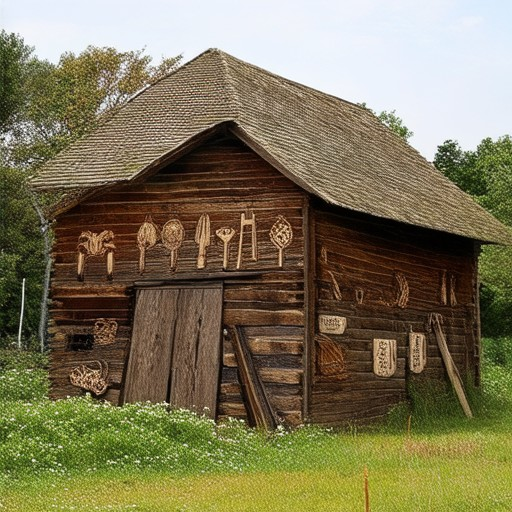
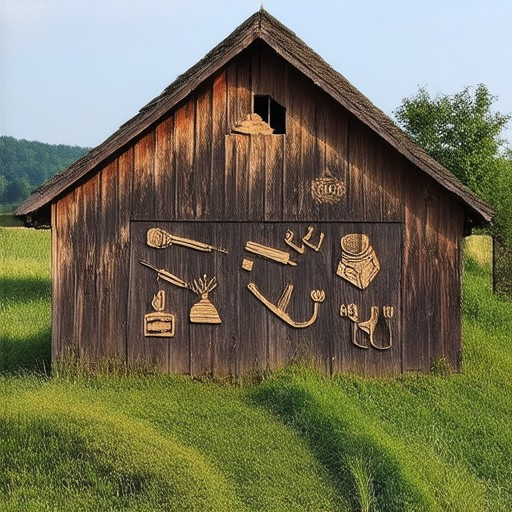
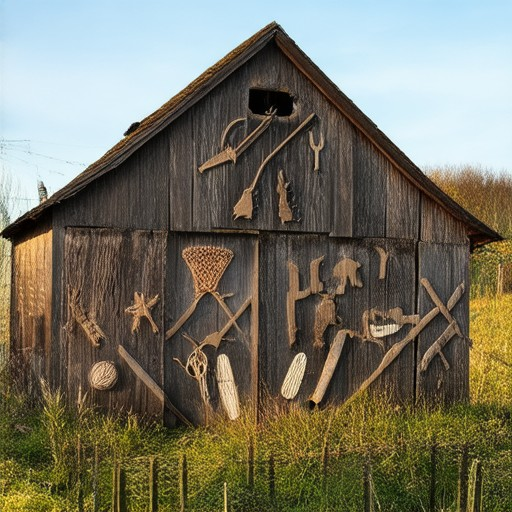
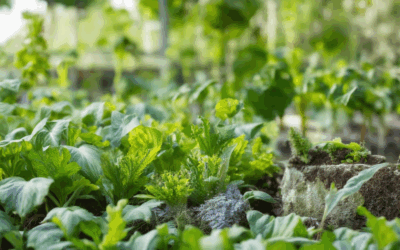
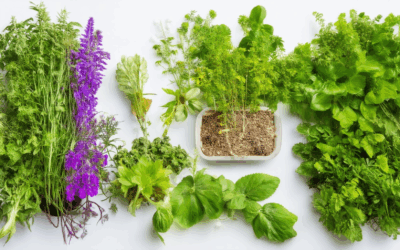
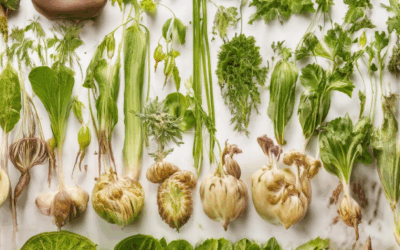
0 Comments